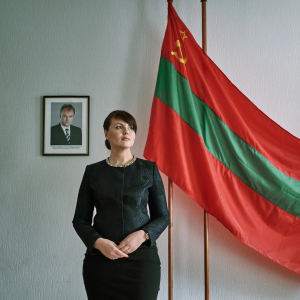
On October 26th, 2014, incumbent Brazilian President Dilma Rousseff won the second round of presidential elections in Brazil over her challenger, Aécio Neves, though only by a close margin with 51.64% of the vote. President Rousseff now enters her second term since 2011, but the election has left Brazil deeply divided. The contest between both candidates was rife with heated debates, personal attacks, and major substantive disagreements as the nation became increasingly polarized around these two political figures. Campaign discourse revealed a deep divide in the electorate: “populism” versus “hyper-capitalism,” the lower class versus the upper and middle classes, and the poorer north of the country versus the prosperous south.
The tale of two Brazils is an economic story. Rousseff champions the leftist ideology of the Workers’ Party, and has been lauded for her achievements that have pulled thousands out of poverty. Despite a persistent economic slowdown during her first term, Rousseff’s antipoverty efforts protected the poorer segments of the population from severe economic hardship by keeping the unemployment rate low. On the other hand, as the former centrist senator from the Social Democracy Party, Neves campaigned on a pro-growth, market-friendly platform, winning over the votes from Brazil’s richer geographic “center and south.”
The financial markets were quick to reveal their preference. Before the elections, shares of Brazil’s big companies plummeted when public opinion polls revealed strong support for Rousseff, and the Brazilian Real strengthened against the dollar when Neves gained popularity. A report by Santander, a large Spanish bank, stated, “recent market gains could be reversed if Ms. Rousseff’s chances of winning re-election grew stronger.” For these reasons Rousseff mocked Neves as the “candidate of the bankers,” in an attempt to capitalize on increasing populist sentiments.
Much of the political divide emerged as a result of affluent voters’ disappointment in Rousseff’s policies. Early in her first term, economic growth slowed before dipping into a recession in 2014. Annual GDP growth has dropped from 7.5% to near zero since the start of Rousseff’s first term, with annual inflation also rising to 6.75%. Exacerbating the situation, Rousseff imposed controls on energy prices to curb inflation, hurting the economic interests of the upper and middle classes. Even though she has been re-elected, distrust of Rousseff’s macroeconomic platform persists. Large banks and hedge funds took part in a major sell-off, as the stock index consequently plunged by 3.7% and the currency dropped by 2.7%. Unsurprisingly, the growing middle and affluent upper classes remain skeptical about Rousseff’s commitment to their interests.
It is of little wonder, then, that Brazilian society is increasingly economically and politically fragmented. In her acceptance speech, Rousseff declared that she didn’t, “from the bottom of [her] heart,” believe “that this election has divided the country in two.” Yet, the numbers show otherwise. In the election, she took only 51.64% of the votes, the smallest share of the population needed to ensure victory since the reestablishment of democracy in Brazil in the 1980s. Even politician Romeu Tuma posted an electoral map of Brazil on Twitter, illustrating a geographic wall segregating Rousseff’s poorer north from the more affluent south.

Indeed, inequality in Brazil has long been a headache for its leaders. Given the enormous growth of its economy in recent years, unequal distribution of the subsequent benefits would only worsen the polarization. According to the World Bank, Brazil’s Gini index stands at a high 52.7% in 2012 (100% indicates perfect inequality), putting it on the list of the 20 most unequal countries based on 2009 data. Hence, when presidential politics offers two choices of representation, voters flock to support those representing their starkly different interests, sorting themselves behind polarizing elites.
The deep divide of Brazil poses a massive challenge in President Rousseff’s new term. First, Tony Volpon, an analyst at Nomura Securities, commented that Rousseff must now “regain the trust of the south and southeast.” While she has flirted with the idea of appointing Henrique Meirelles, a former central bank governor, as the new finance minister, Rousseff needs to follow up her words with prompt actions. Additionally, she should stick to her promises of initiating dialogue with investors and entrepreneurs in promoting reforms.
Crossing their fingers, the economically wealthy of Brazil can only have faith in Rousseff’s intention to be “a much better president than [she has] been so far,” as she herself stated in her recent acceptance speech. Hopefully, that means the two Brazils can be reunited as soon as possible.





Be First to Comment